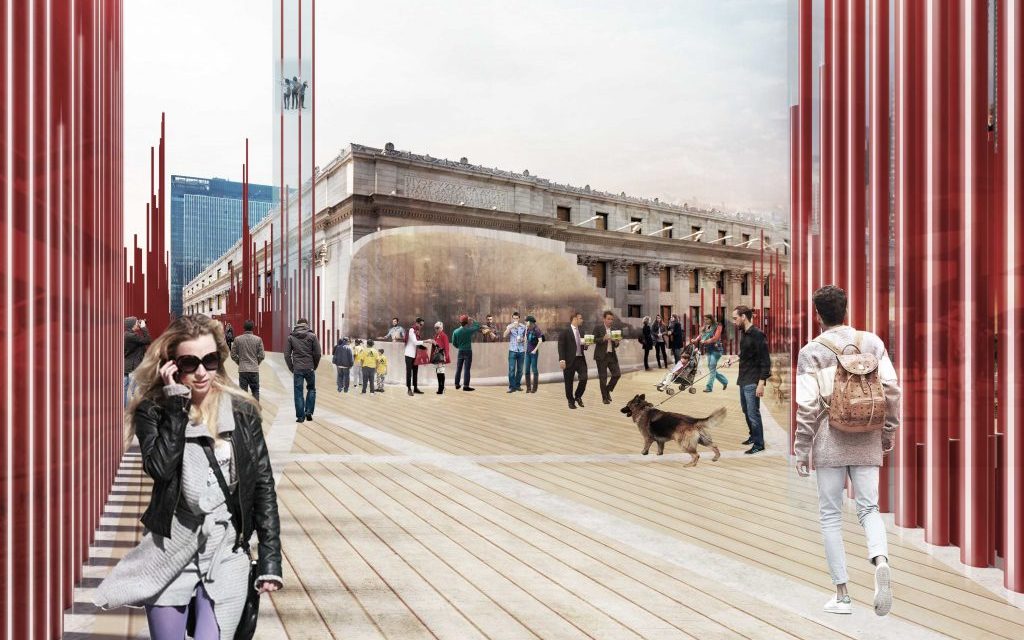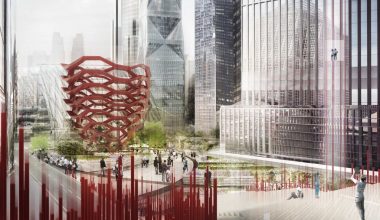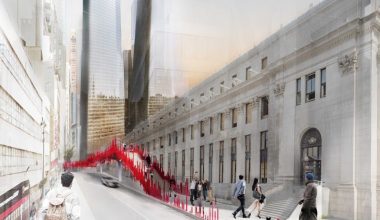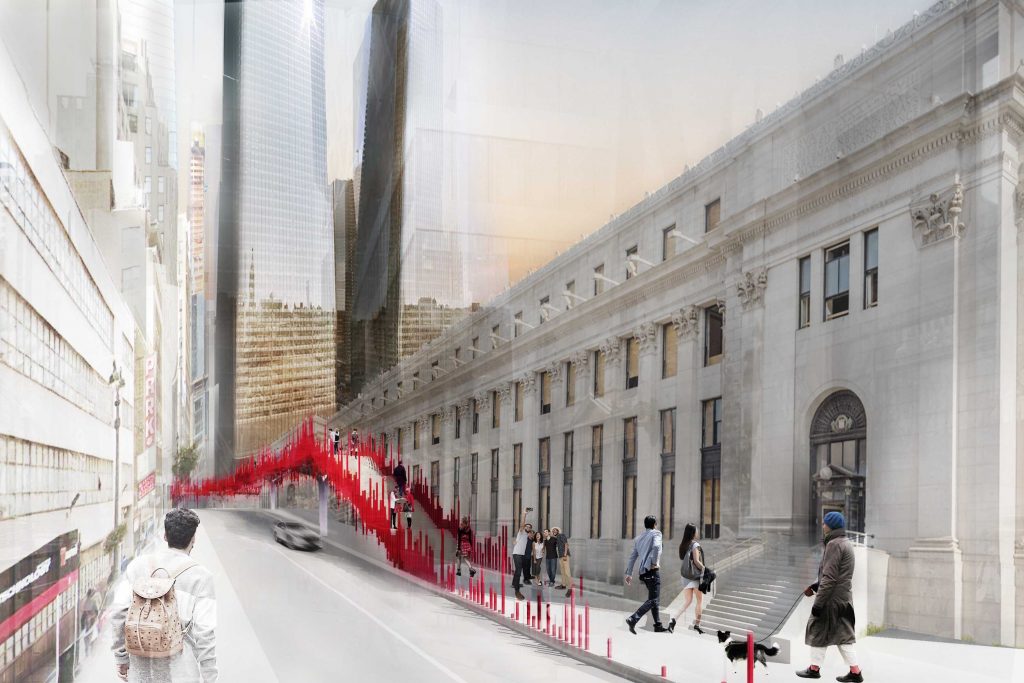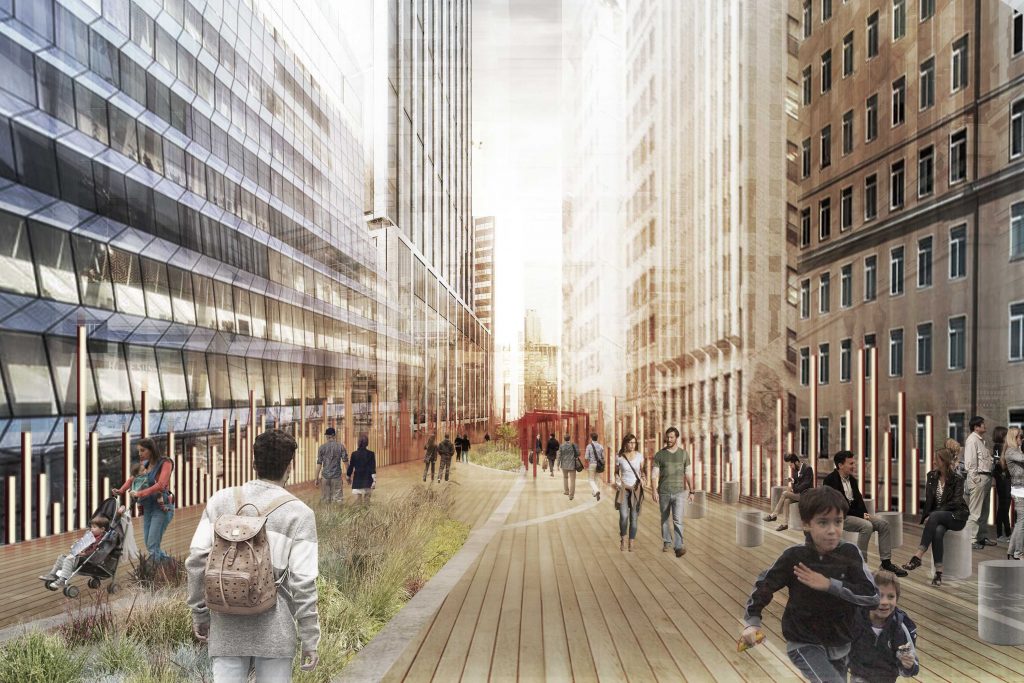NYC: Manhattan’s first footbridge connecting urban landscape
A bridge connecting urban landscape! A competition of architecture and landscape design to generate ideas for making foot travel a more attractive, engaging component of living and working in a city. The Competition was held by The Metals in Construction magazine and Steel Institution of New York.
In urban environments overly reliant on automobiles, The Competition aims to create an elevated, landscaped path that encourages foot travel. Therefore, it would reduce congestion and improve the overall experience of urban life.
The challenge is to conceive of a pedestrian bridge that connects the transportation hub of the Moynihan Station with the city’s Hudson Yards. About 100,000 workers will travel to offices there from the rail station each day.
We proudly introduce our concept: The BEAT
A landscaped promenade bridge
The Beat is first and foremost an artwork. Precisely, an urban artwork at large scale, in which people can make a promenade, where artists can make their outdoor performances or exhibitions.
In contrary to straight tracks of cars, the form of The Beat is designed in a sinuous freehand form. It suggests the slow and winding walking track of human’s promenade. The soft track of human defines the soft form of the bridge and makes it a significantly recognizable artwork in a rectilinear urban background.
How the pedestrian bridge affect the urban visual impact
We seek to achieve a strong visual impact in a simple way. In that vision, by using only vertical steel tubes, we compose a “visual rhythm” along the bridge with various tube lengths. This results in a strong identity of the movement, density, and frequencies.
Besides, the composition of the bridge’s facade sends a direct visual message in the actual busy urban context with a lot of traffic. Therefore, it invites people to explore their paths. Thanks to its iconic shape, The Beat is easily recognizable from its surrounding skyscrapers. Moreover, vertical tubes give a gentle blend to the vertical of Manhattan. The sinuous waves make it a striking artwork from both outside and inside.
The first walking machine in Manhattan
The users of the bridge are classified according to their own purposes and their moving speeds.
- For those who need a very quick daily track between Moynihan Station and Hudson Yards, the bridge provides the shortest path that directly connects Moynihan Station to The Shed and The Vessel’s vicinity. To make the daily routine even shorter, high-speed pedestrian conveyors in two directions are installed by the side of the bridge. That will help people to cross the distance in just a few minutes.
- For wanderers who prefer to spend more time on the bridge, slow walking lanes will help them to explore the quarter on longer pathways connecting to the High Line.
- The bridge will also give place for artist’s outdoor performances. Art performers can easily find enlarged segments that allow them to settle their performances. Art spaces not only give to walkers a pleasant experience but also turn the bridge into a connecting place.
A connection that is accessible to all walking lovers
The Bridge connecting urban landscape is accessible from many points along the way. Wheelchairs can get access via transparent lifts. For the ease of movement for all, the whole bridge is flat except sitting steps at performing areas.
A sparkling bridge that connects urban views
Vertical tubes along the bridge are not just steel bars. They are integrated with LED lights along their length. These lamps are both audio sensitive and pressure-sensitive. That means their light reacts to surrounding sound or to footsteps pressure in various programmed scenarios. In interaction mode, the lights turn on and off according to the footstep rhythm of walkers.
In addition, The light might also be dancing where music performance is taking place. Looking at the bridge’s facade from street level, one can tell if the foot traffic on the bridge is intense or moderated. Even whether an art performance is going on.
Moreover, the whole facade of the bridge could become a panoramic LED screen that displays light shows. Sparkling lights on the bridge would make it a striking artwork at night from any viewpoint in West Manhattan.
 HOMA
HOMA

